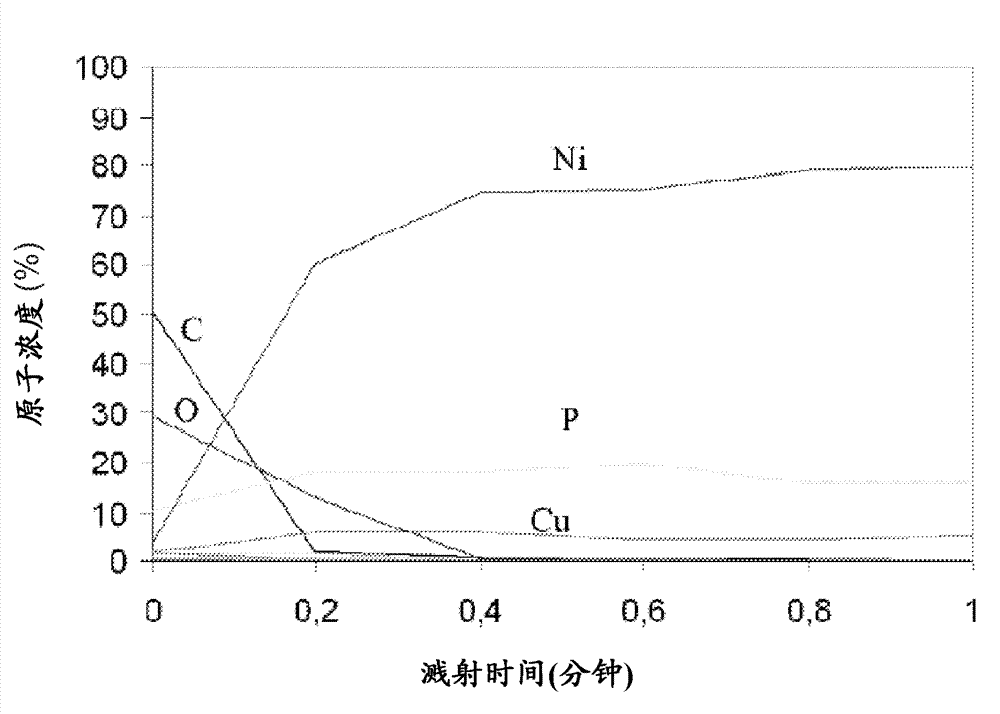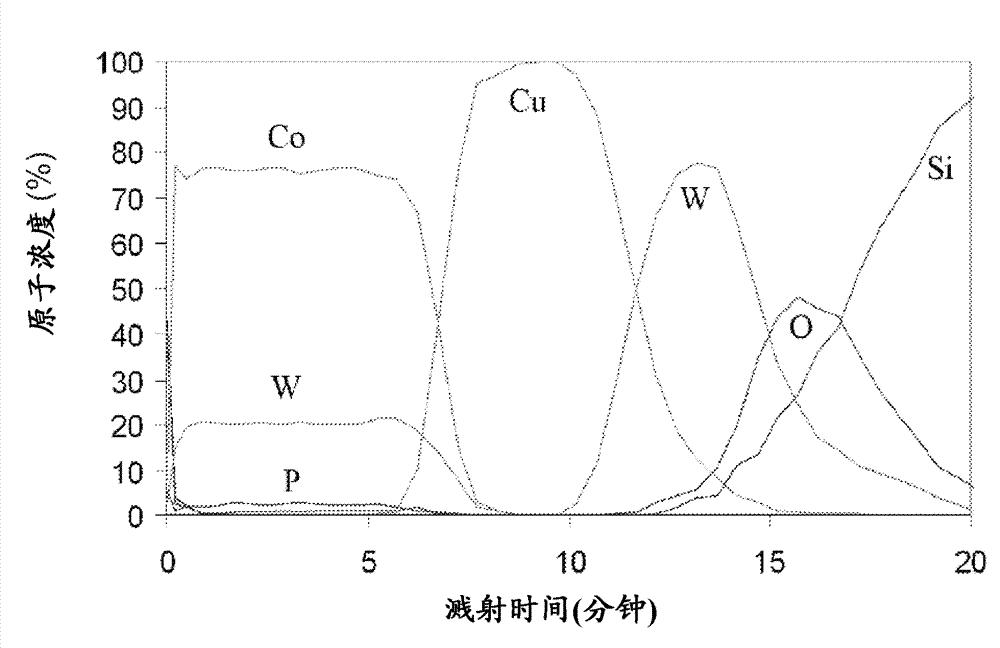Wire bondable surface for microelectronic devices
A technique for bonding surfaces, bonding layers, applied in the field of metal and metal alloy layer sequences
- Summary
- Abstract
- Description
- Claims
- Application Information
AI Technical Summary
Problems solved by technology
Method used
Image
Examples
Embodiment 1
[0056] Embodiment 1 (comparison)
[0057] A nickel-phosphorus alloy is deposited by electroless plating onto the contact pads made of copper. The thickness of the nickel-phosphorus alloy after deposition was 1.0 μm and the phosphorus concentration was 12% by weight.
[0058] The substrate was then annealed at 500°C for 8 hours.
[0059] The diffusion behavior of copper into the nickel phosphorus alloy (and vice versa) was determined using XPS measurements in conjunction with exfoliation of the layer.
[0060] A copper content of 3-5 atomic % was observed in the nickel phosphorous alloy layer after the annealing step.
[0061] Therefore, the thin nickel-phosphorous alloy layer did not prevent copper diffusion at high temperature.
Embodiment 2
[0063] Co-W-P alloys were deposited onto contact pads made of copper by electroplating. The thickness of the Co—W—P alloy after deposition was 0.2 μm and the phosphorus concentration was 3% by weight.
[0064] Thermal annealing and XPS measurements were performed as described in Example 1.
[0065] Negligible amounts of copper were detected in the Co-W-P alloy layer after thermal annealing.
[0066] Therefore, the thin Co-W-P alloy layer does prevent copper diffusion at high temperature.
Embodiment 3
[0068] Co-W-P alloys were deposited onto contact pads made of copper by electroplating. The thickness of the Co—W—P alloy after deposition was 0.2 μm and the phosphorus concentration was 3% by weight.
[0069] Next, an intermediate layer of pure palladium (thickness: 0.3 μm) and thereafter a top layer of gold (thickness: 0.03 μm) was deposited onto the palladium layer.
[0070] The wire bonding properties of the final metal and metal alloy layer sequence consisting of copper contact pads, Co—W—P alloy layer, palladium layer with a palladium content of more than 99% by weight and a gold layer were determined using standard no. DVS2811.
[0071] A Delvotec model 5410 TS bonder was used with gold wire Au-AH3 (Hereaus) and binding parameters US power 75% (tick marks (no calibration scale), given parameters specific to TS bonder); 25 gf binding force and 25 ms binding time. Measurements were made for 30 stud bump / pad dimensions.
[0072] The following parameters were determined d...
PUM
 Login to View More
Login to View More Abstract
Description
Claims
Application Information
 Login to View More
Login to View More - R&D
- Intellectual Property
- Life Sciences
- Materials
- Tech Scout
- Unparalleled Data Quality
- Higher Quality Content
- 60% Fewer Hallucinations
Browse by: Latest US Patents, China's latest patents, Technical Efficacy Thesaurus, Application Domain, Technology Topic, Popular Technical Reports.
© 2025 PatSnap. All rights reserved.Legal|Privacy policy|Modern Slavery Act Transparency Statement|Sitemap|About US| Contact US: help@patsnap.com


